Bigger is better for construction
23 December 2024

 Nothing encapsulates a buoyant construction market better than signing a contract to complete the world’s tallest tower. That happened on 2 October 2024, when Saudi Binladin Group (SBG) was awarded a $2bn contract to complete the 1,000-metre-plus Jeddah Tower.
Nothing encapsulates a buoyant construction market better than signing a contract to complete the world’s tallest tower. That happened on 2 October 2024, when Saudi Binladin Group (SBG) was awarded a $2bn contract to complete the 1,000-metre-plus Jeddah Tower.
The award was significant in many ways. It was a revival of the tower project, which has been on hold since 2018, and it was also a comeback for SBG after years of financial stress that had led many in the market to think it would never win another major construction deal.
On a macro level, the construction deal confirmed that the region is home to the world’s most daring and challenging construction projects.
More importantly, these projects are more than just aspirations; they are real projects that are being built.
Biggest contracts
While Jeddah Tower was the most symbolic contract award in 2024, at $2bn, it was not the largest. That accolade went to the Italian contractor WeBuild when it was awarded a $4.7bn contract for the construction of the three dams at the Trojena mountain resort at Neom in January.
Like Jeddah Tower, the project is a challenging one. Time pressure is a key issue. Trojena has been selected to host the 2029 Asian Winter Games, and the reservoir will be used to make the snow for the event. This means the dams must be completed and the reservoir filled well in advance.
The project is also technically complex. The main dam will have a height of 145 metres and will be 475 metres long at its crest. Inside the reservoir there will be a kidney-shaped dam that will house an attraction known as the Enchanted Forest, which will be connected to the rest of the Trojena development by an underwater tunnel.
WeBuild’s involvement also highlighted that international contractors, after sitting on the sidelines for a number of years, are playing an active role in the Saudi construction market.
One market segment that has attracted strong interest is building stadiums, which like Trojena have to be completed for football tournaments with fixed dates: the 2027 Asian Games and the 2034 Fifa World Cup.
In October, Spain’s FCC in joint venture with the local Nesma & Partners secured a $1bn contract to build the Prince Mohammed Bin Salman Stadium at the Qiddiya City development on the outskirts of Riyadh.
Earlier in the year, a joint venture of Belgian contractor Besix and the local Albawani was awarded the contract to build the Aramco football stadium in Al-Khobar, and Beijing-headquartered China Railway Construction Corporation and local contractor Sama Construction for Trading & Contracting won the contract to construct the Jeddah Central stadium project.
Outside of Saudi Arabia, there were only two contract awards valued at over $1bn and both were in the UAE emirate of Abu Dhabi.
In January, a $1.2bn contract to complete phases two and four at the Saadiyat Lagoons project was awarded to a joint venture of two Abu Dhabi-based contractors, Trojan Construction Group and Arabian Construction Company.
The other $1bn-plus deal was a $1.4bn contract to complete dredging and marine works for the Nisi Island development, which was awarded to the local NMDC Group.
These deals were highlights in what was a strong year for the rest of the market. In total, according to regional projects tracker MEED Projects, there were $67.9bn of construction contract awards by the end of October 2024. If the trajectory is maintained until the end of the year, it will result in about $81.4bn of awards, which is lower than the $96.9bn of awards recorded in 2023, but still higher than any of the eight years from 2015 to 2022.
 Market challenges
Market challenges
Replicating the record-breaking performance of 2023 was never going to be easy, especially after Riyadh warned that its spending would be more targeted at the end of 2023. Those comments, made by the finance minister, set the tone for 2024, which proved to be a year with plenty of contract awards, but without the apparent carefree attitude to spending that characterised 2023.
The other challenge with following on from a bumper year is supply chain constraints. With full order books, contractors and suppliers have lost some of the appetite that they had for new work in 2023. The result of this for project clients has been difficulties in attracting enough bidders, and when bids are submitted, the offers are often not competitively priced.
These challenges have been felt most acutely by projects in the remote regions of Saudi Arabia. The issue is so prevalent at Neom that there is now a phenomenon known as ‘Neom inflation’, which implies that the $500bn gigaproject in the remote northwestern corner of the kingdom has its own unique inflation rate.
These regional issues have added to the international supply chain constraints that have been felt since the Covid-19 pandemic and, more recently, during the conflict in Gaza and threats to shipping lanes in the Red Sea.
 Addressing challenges
Addressing challenges
The market has responded to these challenges. In Saudi Arabia, the Public Investment Fund (PIF) invested in four of the kingdom’s largest general contractors in 2023. Then, in February 2024, the sovereign wealth vehicle announced that it had, together with the National Infrastructure Fund, introduced a new contractor financing programme, designed to strengthen the construction sector’s finances.
The programme aims to provide contractors with finance solutions to help improve their cash flows.
Developers have also been improving their contract terms and, crucially, working to ensure payments are processed on time – a move that should also help improve contractor cash flows.
The PIF-backed development companies have also been actively working on attracting new companies to Saudi Arabia. They have been travelling the world on roadshows to attract more contractors and suppliers to projects in the kingdom.
These roadshows have been highlighting the volume and scale of the opportunities in Saudi Arabia, and have shown that the kingdom offers long-term opportunities for companies that come and invest in the market.
In the UAE, Abu Dhabi has invested heavily in its construction supply chain. With its government-controlled investment vehicles and a series of interconnected mergers and acquisitions, Abu Dhabi and its ruling family now own the emirate’s key contracting companies and the suppliers of vital raw materials such as cement and steel.
These national champions shield Abu Dhabi from many, but not all, supply chain challenges that have impacted projects in other markets.
Meanwhile, in Dubai, where the real estate market is driving construction, private sector developers are courting contractors to work on their projects.
As private entities, they are not bound by the procurement regulations that government or government-controlled developers have, so they have been offering directly negotiated deals to help guarantee that their projects are delivered on time.

2025 outlook
Unless the market dynamics shift dramatically, the market will likely face many of the same challenges in 2025.
One of the overriding fears is a sharp slowdown in project spending in Saudi Arabia. This has happened before and is a valid concern, and the market has already shown signs of plateauing in some areas.
This is most noticeable when contract awards for the five official gigaprojects – Diriyah, Neom, Qiddiya, Red Sea Global and Roshn – are examined. After a sharp ramp-up in awards from 2020 to 2023, the pace of contract awards levelled off in 2024, which reflects budgetary concerns within the development companies and the PIF, and the market’s ability to take on such large volumes of new work.
With budgets under pressure, developers in Saudi Arabia are increasingly looking for investment to help fund their projects. The success of these efforts will determine how buoyant the market in the kingdom remains over the long term.
Even if investment comes in, it will take time, which means there will likely be a degree of conservatism from development companies in 2025. This was signalled in mid-November, when Neom, while announcing the exit of CEO Nadhmi Al-Nasr and the appointment of Aiman Al-Mudaifer as acting CEO, said: “As Neom enters a new phase of delivery, this new leadership will ensure operational continuity, agility and efficiency to match the overall vision and objectives of the project.”
While there may be a pause in spending on some of the Saudi gigaprojects, other schemes continue to underpin the performance of the construction market.
Oil prices remain supportive of government spending on projects across the Gulf, and for the private sector, in markets such as the UAE, real estate projects continue to move into construction as developers rush to deliver units to investors and capitalise on the ongoing strength of the property market.
Exclusive from Meed
-
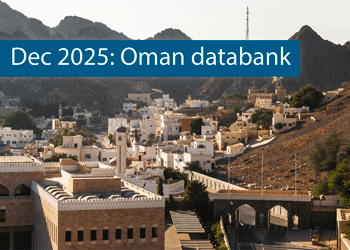 Oman’s growth forecast points upwards
Oman’s growth forecast points upwards24 December 2025
-
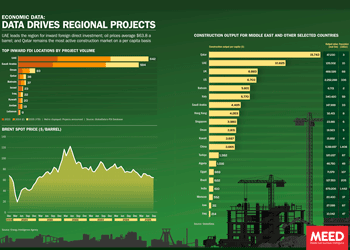 December 2025: Data drives regional projects
December 2025: Data drives regional projects23 December 2025
-
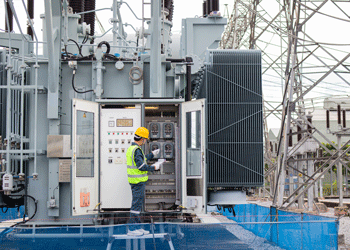 Local firm bids lowest for Kuwait substation deal
Local firm bids lowest for Kuwait substation deal22 December 2025
-
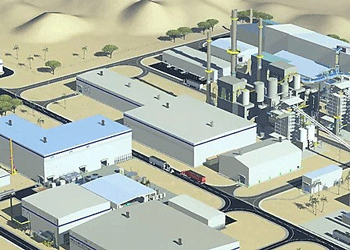 Saudi-Dutch JV awards ‘supercentre’ metals reclamation project
Saudi-Dutch JV awards ‘supercentre’ metals reclamation project22 December 2025
-
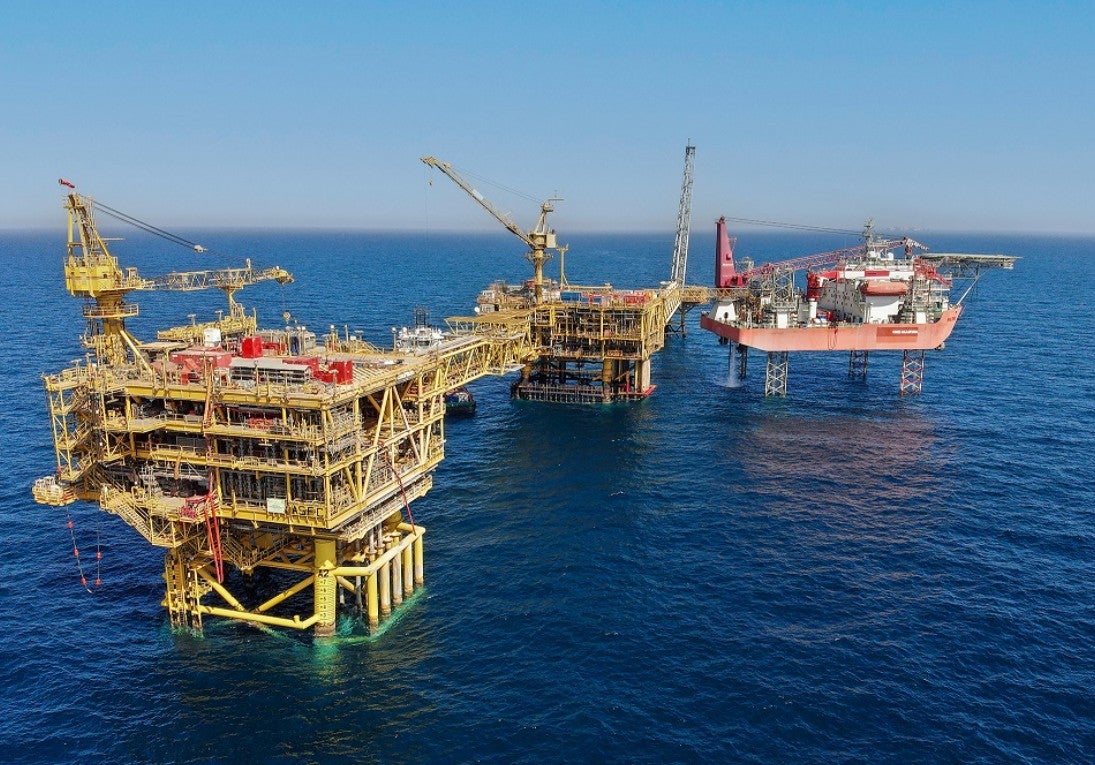 QatarEnergy LNG awards $4bn gas project package
QatarEnergy LNG awards $4bn gas project package22 December 2025
All of this is only 1% of what MEED.com has to offer
Subscribe now and unlock all the 153,671 articles on MEED.com
- All the latest news, data, and market intelligence across MENA at your fingerprints
- First-hand updates and inside information on projects, clients and competitors that matter to you
- 20 years' archive of information, data, and news for you to access at your convenience
- Strategize to succeed and minimise risks with timely analysis of current and future market trends

Related Articles
-
 Oman’s growth forecast points upwards
Oman’s growth forecast points upwards24 December 2025

MEED’s January 2026 report on Oman includes:
> COMMENT: Oman steadies growth with strategic restraint
> GVT & ECONOMY: Oman pursues diversification amid regional concerns
> BANKING: Oman banks feel impact of stronger economy
> OIL & GAS: LNG goals galvanise Oman’s oil and gas sector
> POWER & WATER: Oman prepares for a wave of IPP awards
> CONSTRUCTION: Momentum builds in construction sectorTo see previous issues of MEED Business Review, please click herehttps://image.digitalinsightresearch.in/uploads/NewsArticle/15306449/main.gif -
 December 2025: Data drives regional projects
December 2025: Data drives regional projects23 December 2025
Click here to download the PDF
Includes: Top inward FDI locations by project volume | Brent spot price | Construction output
MEED’s January 2026 report on Oman includes:
> COMMENT: Oman steadies growth with strategic restraint
> ECONOMY: Oman pursues diversification amid regional concerns
> BANKING: Oman banks feel impact of stronger economy
> OIL & GAS: LNG goals galvanise Oman’s oil and gas sector
> POWER & WATER: Oman prepares for a wave of IPP awards
> CONSTRUCTION: Momentum builds in construction sectorTo see previous issues of MEED Business Review, please click herehttps://image.digitalinsightresearch.in/uploads/NewsArticle/15306140/main.gif -
 Local firm bids lowest for Kuwait substation deal
Local firm bids lowest for Kuwait substation deal22 December 2025
The local Al-Ahleia Switchgear Company has submitted the lowest price of KD33.9m ($110.3m) for a contract to build a 400/132/11 kV substation at the South Surra township for Kuwait’s Public Authority for Housing Welfare (PAHW).
The bid was marginally lower than the two other offers of KD35.1m and KD35.5m submitted respectively by Saudi Arabia’s National Contracting Company (NCC) and India’s Larsen & Toubro.
PAHW is expected to take about three months to evaluate the prices before selecting the successful contractor.
The project is one of several transmission and distribution projects either out to bid or recently awarded by Kuwait’s main affordable housing client.
This year alone, it has awarded two contracts worth more than $100m for cable works at its 1Z, 2Z, 3Z and 4Z 400kV substations at Al-Istiqlal City, and two deals totalling just under $280m for the construction of seven 132/11kV substations in the same township.
Most recently, it has tendered two contracts to build seven 132/11kV main substations at its affordable housing project, west of Kuwait City. The bid deadline for the two deals covering the MS-01 through to MS-08 substations is 8 January.
https://image.digitalinsightresearch.in/uploads/NewsArticle/15305745/main.gif -
 Saudi-Dutch JV awards ‘supercentre’ metals reclamation project
Saudi-Dutch JV awards ‘supercentre’ metals reclamation project22 December 2025
The local Advanced Circular Materials Company (ACMC), a joint venture of the Netherlands-based Shell & AMG Recycling BV (SARBV) and local firm United Company for Industry (UCI), has awarded the engineering, procurement and construction (EPC) contract for the first phase of its $500m-plus metals reclamation complex in Jubail.
The contract, estimated to be worth in excess of $200m, was won by China TianChen Engineering Corporation (TCC), a subsidiary of China National Chemical Engineering Company (CNCEC), following the issue of the tender in July 2024.
Under the terms of the deal, TCC will process gasification ash generated at Saudi Aramco’s Jizan refining complex on the Red Sea coast to produce battery-grade vanadium oxide and vanadium electrolyte for vanadium redox flow batteries. AMG will provide the licensed technology required for the production process.
The works are the first of four planned phases at the catalyst and gasification ash recycling ‘Supercentre’, which is located at the PlasChem Park in Jubail Industrial City 2 alongside the Sadara integrated refining and petrochemical complex.
Phase 2 will expand the facility to process spent catalysts from heavy oil upgrading facilities to produce ferrovanadium for the steel industry and/or additional battery-grade vanadium oxide.
Phase 3 involves installing a manufacturing facility for residue-upgrading catalysts.
In the fourth phase, a vanadium electrolyte production plant will be developed.
The developers expect a total reduction of 3.6 million metric tonnes of carbon dioxide emissions a year when the four phases of the project are commissioned.
SARBV first announced its intention to build a metal reclamation and catalyst manufacturing facility in Saudi Arabia in November 2019. The kingdom’s Ministry of Investment, then known as the Saudi Arabian General Investment Authority (Sagia), supported the project.
In July 2022, SARBV and UCI signed the agreement to formalise their joint venture and build the proposed facility.
The project has received support from Saudi Aramco’s Namaat industrial investment programme. Aramco, at the time, also signed an agreement with the joint venture to offtake vanadium-bearing gasification ash from its Jizan refining complex.
Photo credit: SARBV
https://image.digitalinsightresearch.in/uploads/NewsArticle/15305326/main.gif -
 QatarEnergy LNG awards $4bn gas project package
QatarEnergy LNG awards $4bn gas project package22 December 2025
QatarEnergy LNG, a subsidiary of state-owned QatarEnergy, has awarded the main engineering, procurement, construction and installation (EPCI) contract for a major package for the second phase of its North Field Production Sustainability (NFPS) project.A consortium comprising the Italian contractor Saipem and state-owned China Offshore Oil Engineering Company (COOEC) has secured the EPCI contract for the COMP5 package. The contract value is $4bn, with Saipem declaring its share to be worth $3.1bn.
Milan-headquartered Saipem said the contract will run for about five years. The scope of work comprises engineering, procurement, fabrication and installation of two compression complexes, each including a compression platform, a living quarters platform, a flare platform supporting the gas combustion system, and the related interconnecting bridges. Each complex will have a total weight of about 68,000 tonnes.
Offshore installation operations will be carried out by Saipem’s De He construction vessel in 2029 and 2030.
MEED previously reported that the following contractors submitted bids for the NFPS phase two COMP5 package:
- Larsen & Toubro Energy Hydrocarbon (India)
- McDermott (US)
- Saipem/China Offshore Oil Engineering Company (Italy/China)
QatarEnergy LNG, formerly Qatargas, is said to have issued the tender for the NFPS phase two COMP5 package in the first quarter of the year.
Contractors submitted technical bids for the COMP5 package in late June, while commercial bids were submitted by 8 October, as per sources.
Based upon initial evaluation of bids by QatarEnergy LNG, L&TEH has emerged as the lowest bidder for the COMP5 package, followed by McDermott, with the consortium of Saipem and COOEC in third place, MEED reported in late October.
In the weeks following that, the project operator is said to have engaged all bidders for a final round of negotiations, during which the consortium of Saipem and COOEC is believed to have “clinched the deal”, according to sources.
The detailed scope of work on the COMP5 package covers the EPCI work on the following:
- Two gas compression platforms, each weighing 30,000-35,000 tonnes, plus jacket
- Two living quarters platforms, plus jacket
- Two gas flare platforms, plus jacket
- Brownfield modification work at two complexes
NFPS scheme
QatarEnergy’s North Field liquefied natural gas (LNG) expansion programme requires the state enterprise to pump large volumes of gas from the North Field offshore reserve to feed the three phases of the estimated $40bn-plus programme.
QatarEnergy has already invested billions of dollars in engineering, procurement and construction works on the two phases of the NFPS project, which aims to maintain steady gas feedstock for the North Field LNG expansion phases.
The second NFPS phase will mainly involve building gas compression facilities to sustain and gradually increase gas production from Qatar’s offshore North Field gas reserve over the long term.
Saipem has been the most successful contractor on the second NFPS phase, securing work worth a total of $8.5bn.
QatarEnergy LNG awarded Saipem a $4.5bn order in October 2022 to build and install gas compression facilities. The main scope of work on the package, which is known as EPCI 2, covers two large gas compression complexes that will comprise decks, jackets, topsides, interconnecting bridges, flare platforms, living quarters and interface modules.
The gas compression complexes – CP65 and CP75 – will weigh 62,000 tonnes and 63,000 tonnes, respectively, and will be the largest fixed steel jacket compression platforms ever built.
Following that, Saipem won combined packages COMP3A and COMP3B of the NFPS project’s second phase in September last year.
The scope of work on the combined packages encompasses the EPCI of a total of six platforms, approximately 100 kilometres (km) of corrosion resistance alloy rigid subsea pipelines of 28-inches and 24-inches diameter, 100km of subsea composite cables, 150km of fibre optic cables and several other subsea units.
Separately, QatarEnergy LNG awarded McDermott the contract for the NFPS second phase package known as EPCI 1, or COMP1, in July 2023. The scope of work on the estimated $1bn-plus contract is to install a subsea gas pipeline network at the North Field gas development.
In March this year, India’s Larsen & Toubro Energy Hydrocarbon (LTEH) won the main contract for the combined 4A and 4B package, which is the fourth package of the second phase of the NFPS project and is estimated to be valued at $4bn-$5bn.
The main scope of work on the package is the EPCI of two large gas compression systems that will be known as CP8S and CP4N, each weighing 25,000-35,000 tonnes. The contract scope also includes compression platforms, flare gas platforms and other associated structures.
LTHE sub-contracted detailed engineering and design works on the combined 4A and 4B package to French contractor Technip Energies.
NFPS first phase
Saipem is also executing the EPCI works on the entire first phase of the NFPS project, which consists of two main packages.
Through the first phase of the NFPS scheme, QatarEnergy LNG aims to increase the early gas field production capacity of the North Field offshore development to 110 million tonnes a year.
QatarEnergy LNG awarded Saipem the contract for the EPCI package in February 2021. The package is the larger of the two NFPS phase one packages and has a value of $1.7bn.
Saipem’s scope of work on the EPCI package encompasses building several offshore facilities for extracting and transporting natural gas, including platforms, supporting and connecting structures, subsea cables and anti-corrosion internally clad pipelines.
The scope of work also includes decommissioning a pipeline and other significant modifications to existing offshore facilities.
In addition, in April 2021, QatarEnergy LNG awarded Saipem two options for additional work within the EPCI package, worth about $350m.
QatarEnergy LNG awarded Saipem the second package of the NFPS phase one project, estimated to be worth $1bn, in March 2021.
Saipem’s scope of work on the package, which is known as EPCL, mainly covers installing three offshore export trunklines running almost 300km from their respective offshore platforms to the QatarEnergy LNG north and south plants located in Ras Laffan Industrial City.
Saipem performed the front-end engineering and design work on the main production package of the first phase of the NFPS as part of a $20m contract that it was awarded in January 2019. This provided a competitive advantage to the Italian contractor in its bid to win the package.
https://image.digitalinsightresearch.in/uploads/NewsArticle/15305330/main2239.jpg

